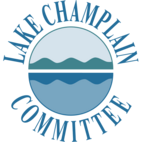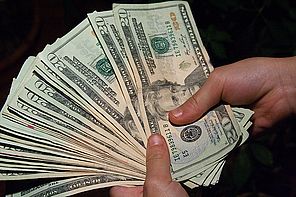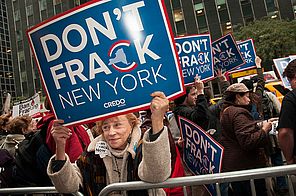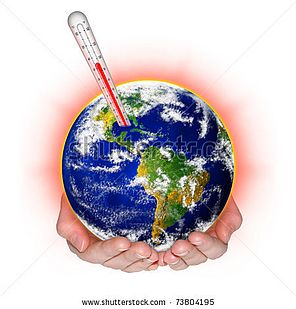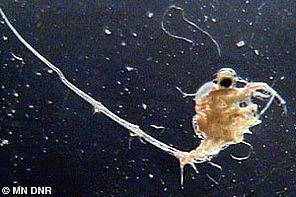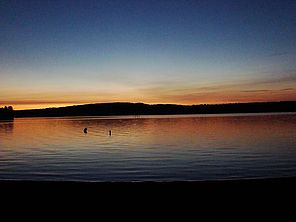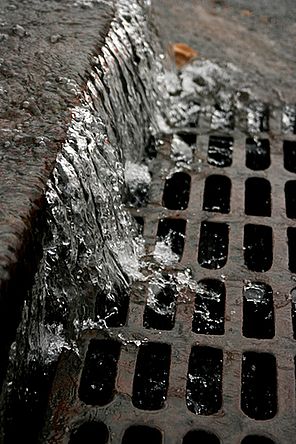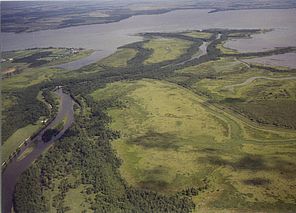Clean Water Costs
Earlier this year the Vermont Legislature asked the Agency of Natural Resources (VT ANR) to produce a report that did four things: examined funding options for water quality improvements, estimated the total state-wide need for such funding, suggested ways the funds could be administered, and identified priority needs for action. In the draft report issued December 14, the Agency estimates it will cost over $155 million dollars annually to meet all statewide needs.
Costs include replacing aging drinking water and waste water facilities, expanding treatment and regulation of smaller plots of developed land, better treating runoff from roads, and increasing various water quality protection programs for farms. They explored 16 different funding options including various excise taxes, targeted fees, statewide stormwater fees, and others. According to the report, if all funding options posed were utilized it would raise less than 20% of the annual revenue necessary to restore water quality throughout the state – leaving a $130 million funding gap.
This discouraging news makes it clear that moving forward we will need to set priorities to maximize and target available resources to where they can have the greatest effects. LCC will continue to be involved in this work and in making the case that investing in the health of our waterways is an investment in our future. Clean, accessible water is fundamental to our quality of life and the health of our communities and economy. You can download a copy of the report or read it online at VT ANR’s website. Comments are due by December 28 and a revised report is expected to be issued to the Legislature by January 11, 2013.
NY Fracking Fracas
The New York State Department of Environmental Conservation (NYS DEC) has issued draft regulations for fracking and is accepting public comments until January 11. In 2012 Vermont became the first state to ban fracking. LCC lobbied for the ban and is critical of New York’s decision to issue revised draft rules prior to the completion of a health study currently being conducted by the Commissioner of Health and before the release of an environmental impact statement begun in 2008. NYS DEC expects to finalize rules in late February. If adopted, the rules would end New York’s current moratorium on fracking in the state.
“Issuing draft regulations before the environmental impact statement and the health studies are completed is putting the cart before the horse,” stated LCC Executive Director Lori Fisher. “These reports are fundamental to a thorough assessment of the risks to our air, water, soil and public health.” NYS DEC claims that if the state decides that hydraulic fracturing cannot be done safely, “these regulations will not have any practical effect and the process will not go forward”.
Fracking is a controversial practice where a mix of water and other chemicals is injected into rock layers containing natural gas. The mixture fractures the rock, releasing the gas. The process uses substantial amounts of water and has led to contamination of groundwater and other environmental and human health effects.
LCC Joins Climate Change Planning Exercise
As our climate warms, Lake Champlain changes. Already we have seen a decrease in winter ice cover and an increase in precipitation throughout the Basin. Where once the lake froze over almost every year, it has now been five years since the last freeze over. We already receive an additional three inches of precipitation per year with greater increases anticipated. Increased storm frequency and intensity washes more pollution into the lake. Rain in winter causes even more erosion due to the absence of vegetation to slow run off.
LCC is actively working to help the region adapt to a changing climate and build greater resiliency for the future. Read more about LCC helping the region adapt to a changing climate.
The Arrival of Spiny Waterfleas
 In August of this year, the spiny waterflea was found in Lake George, greatly increasing the possibility of its eventual arrival in Lake Champlain. Lake George has a direct connection to Lake Champlain via the LaChute River. Spiny waterfleas have also been found in the Champlain Canal which connects Lake Champlain to the Hudson River. The spiny waterflea has sat atop the list of least desirable invasive aquatic species for quite some time, but how did it earn such apprehension? Read more about the arrival of spiny waterflea.
In August of this year, the spiny waterflea was found in Lake George, greatly increasing the possibility of its eventual arrival in Lake Champlain. Lake George has a direct connection to Lake Champlain via the LaChute River. Spiny waterfleas have also been found in the Champlain Canal which connects Lake Champlain to the Hudson River. The spiny waterflea has sat atop the list of least desirable invasive aquatic species for quite some time, but how did it earn such apprehension? Read more about the arrival of spiny waterflea.
LCC Helps Develop BioFinder
The Vermont Agency of Natural Resources (VT ANR) is on the verge of releasing a new map of biological resources in the state. This map goes well beyond what might appear on a flat piece of paper. VT ANRs’ BioFinder project will provide an important new tool for assessing the significance of Vermont lands and waters for conservation planning and education. The product will compile in one accessible place decades of vital and informative data that have previously hidden in various file cabinets spread out over the state.
VTDigger reported Eric Engstrom, a cartographer working on the project, as saying, “Not only will it create a whole new way to look at Vermont, but this map will underscore that GIS is bringing a revolution to what maps can do”. LCC Staff Scientist Mike Winslow shared his extensive knowledge of Lake Champlain and other aquatic ecosystems to help develop the BioFinder as a member of the Aquatics Working Group. “His scientific knowledge and balanced perspectives have had a very positive result on the project results, which will be available by the end of 2012,” said project leader Eric Sorenson.
Sunrise Sunset
One of the great joys of living near Lake Champlain is the breath-taking sunrises or sunsets one can see over the water. Colors can range from a crisp red to a blend of pastel hues, from pink to baby blue, shifting even over the course of the event. Why is it that dawn and dusk lend such a visual explosion to the sky while mid-day colors range merely from blue through gray?
Pure light is white. For us to perceive color the white light must be separated into its constituent wavelengths, referred to as scattering. Blues and violets have shorter wavelengths while reds and oranges are longer. Two different types of scattering play a role in determining sky color: Rayleigh scattering and Mie scattering. Read more to understand the science behind the colors of a sunset.
New Stormwater Permits
On December 5th, Vermont issued the second round of permits for municipal separate storm sewer systems (MS4). The first round was required under the Clean Water Act in 2003. The first round permit covered twelve Chittenden County communities, UVM, the state Agency of Transportation, and the Burlington International Airport. The second round includes those same entities and adds Rutland City and Town, and St. Albans City and Town. These communities were added because they have stormwater impaired streams that run through them.
The permit requires all affected MS4s to meet six minimum measures: provide public education and outreach, involve the public, detect and eliminate illicit discharges, control construction site runoff, control runoff after construction, and develop a ‘good housekeeping’ procedure for municipally managed operations. In addition, the municipalities will be required to develop Flow Restoration Plans in order to clean up the stormwater impaired streams. The Flow Restoration Plans must include a schedule for restoration, but the schedule is allowed to stretch over 20 years.
Draft Missisquoi River Basin Plan Out for Review
The draft Missisquoi Bay Basin Water Quality Management Plan has been released for review. The plan lays out the current condition of the surface waters and aquatic habitat, water quality problems, and strategies to improve and restore water quality. It covers the Missisquoi River watershed including Black Creek, Tyler Branch, and Trout River, and the Rock and Pike Rivers. Three public meetings have been scheduled where plan details will be presented and participants will be able to offer comments and suggestions. Times and locations of the meetings can be found on the Vermont DEC web-site.
Thank You Volunteers & Partners!
LCC’s work for a healthy, accessible lake depends upon the active involvement of many dedicated volunteers who lend heads, hands, and heart in a myriad of ways. As we close out 2012 the LCC Board of Directors and staff extend our thanks to everyone who has supported our efforts in the field, on the water and out in the community. You are so instrumental to protecting and improving Lake Champlain’s health!
We are grateful to the following private landowners who generously share their shoreland with the Lake Champlain Paddlers Trail: Andy Dregallo, Dawn Hazelett, Jean Richardson, and Selby and Maureen Turner. Thanks also to Paddlers’ Trail Stewards and volunteers who check Trail sites, lead trips, and help us expand the Trail system: Tom and Jeanette Berry, Megan and Greg Epler Wood, Russ, Kent and Sterling Ford, Rob and Sherry Libby, Nancy Olsen, Jim Schweithelm, and Wanda and Michael Spatzer. Click here to read more about the great folks who lend time and talent to LCC!
Moving? Changing Email Addresses?
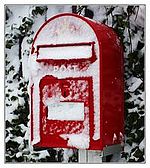
If you’ve changed your address recently, please send us an email so we can update your files and ensure you receive news on lake issues and LCC’s work. Email is our primary form of communication with members. Mailing electronically saves time and resources and reinforces the stewardship ethic of our mission. We don’t give away or sell email addresses.
To ensure you receive email from LCC, please add lcc@lakechamplaincommittee.org and the domain enews.lakechamplaincommittee.org to your safe/allowed list and address book. Thanks!
Like LCC on Facebook!
Follow LCC on Facebook for beautiful lake photos, informative updates, lake conversations and more!
Lake Champlain Committee Board of Directors
Gary Kjelleren - Chair (South Hero, VT), Sharon Murray - Treasurer (Bolton, VT), Alan Booth (Plattsburgh, NY), Sandy Montgomery (Montreal, QC), Ann Ruzow Holland (Willsboro, NY), Mary Van Vleck (Charlotte, VT), Chuck Woessner (Grand Isle, VT).
Lake Champlain Advisory Council
Megan Epler Wood (Burlington, VT), Steven Kellogg (Essex, NY), Peter S. Paine, Jr. (Willsboro, NY), Mary Watzin (NC).
Lake Champlain Committee Staff
Lori Fisher, Executive Director
Jessica Rossi, Office Manager
Mike Winslow, Staff Scientist
